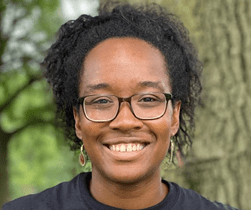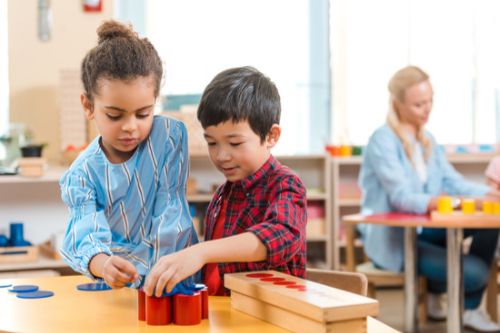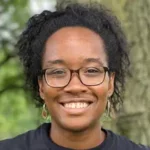Having a successful classroom is understanding the diversity amongst the students. This knowledge, both from the educator and students, will open up space for inclusion. The children will not only benefit from knowing about different cultures, but will be educated on the history of traditions and celebrations. It is up to the educators to research the diversity in the classroom by communicating with parents/guardians, reading material about different cultures, or even partaking in conversations with the students.
Talking with the children can be one of the best ways to understand the diversity in the classroom. Pay attention to different languages being spoken or when the child talks about celebrations at home. Listen when the child is excited to tell you something about a family gathering. These conversations can come up while teaching a lesson, eating a meal together, or even while playing outside. Make mental notes about what the child said and ask the child questions while conversing. The child will feel proud to teach the educator something new about themselves and will be thankful that there is an interest. Inclusion starts with listening to the students without judgement.
Going a step further, it is also important to ask yourself questions as an educator.
- How can I make the intention to respect every child in my classroom?
- What is a goal I can create to make sure each child feels included?
Being aware and trying to understand this as a teacher can help minimize the chance of threatening the child’s identity. Validating each child in the classroom and working towards an understanding of each identity will lead the classroom to a naturally inclusive environment.
Having strong communication with the parents and guardians of the students is an important part of an inclusive classroom and gives you knowledge about the children. One way to learn more about the students is by sending a survey out to the parents at the beginning of the year. This survey can include the option to list any traditions that are celebrated in the family, the cultural background of the child, or asking if another language is spoken at home. When you do hear about the child speaking a native language at home, ask the student about it in the classroom. If the child is comfortable, the child can teach the educator a few words in a different language. The survey can also include an invitation that asks the guardians to come into the classroom and share traditional celebrations with the other students. Also, most times other teachers in the school or friend’s of the educator are happy to volunteer in a classroom and share an important holiday or tradition. The invitation for someone to come into the classroom is part of being authentic to the celebration. Keep in mind that some parents will not participate or might not feel comfortable answering questions. It is up to the educator to do additional research to obtain missing information about the students.
It is critical to learn about a culture from someone that celebrates a traditional holiday rather than from someone who just did research. This can also help minimize the chance of the teacher causing harm and the classroom experiencing cultural appropriation. Dictionary.com defines cultural appropriation as the adoption, usually without acknowledgment, of cultural identity markers from subcultures or minority communities into mainstream culture by people with a relatively privileged status. Wearing a headdress while giving a lesson about Native Americans or having children make and wear headdresses is not culturally appropriate. The purpose of a headdress is sacred and is not for a teacher to explain a cultural history lesson, especially if it is not relevant to the teacher’s own cultural background. The educator is therefore not respecting traditional customs, or in this case traditional clothing, of a traditionally marginalized and targeted group. This can create psychological harm to students who look up to the educator. If the model of the classroom is disrespecting a culture then the children will start to follow the model and possibly cross cultural boundaries as well.
Teaching children the facts about each celebration or holiday is part of an inclusive classroom. Doing arts and crafts can be fun, but by including an educational lesson about the craft the students can make appropriate connections. For example, before making a candle out of paper to represent the lights for Diwali, teach the children about the history and importance of lights and color for this holiday. Also, education about the celebration can include a lesson about the location of where the holiday originated. By finding the location the student will need to use mapping skills, which will be important for the future as well. These skills include finding different countries within continents, using a map key, and calculating distance from one country to another (Mathematics). A study of different flags and the significance of each symbol or color on the flag can be a fun Geography lesson as well. The students can learn about different traditional songs through music which can create a new Language lesson. Learning about important instruments or lyrics that might be part of a particular tradition will teach the children new vocabulary, another Language lesson.
The student’s birthdays are also part of celebrations in the classroom. Singing traditional birthday songs in different languages will expose children to new words that they might not have heard before. The educator can invite different adults (other teachers, friends, or parents) in the classroom to sing the song in different languages or ask a child to sing the song the way they do at home. Young children are interested in language and will have a natural draw to different dialects.
Turning to a more practical lesson would be educating the students about different foods from different cultures. A lesson about traditional dishes can introduce the children to new ingredients. Whether the ingredients are herbs or spices, a discussion where the food comes from (plants or animals) can be beneficial. Cooking can be another great opportunity to invite parents or guardians into the classroom. Some people enjoy making food, especially traditional dishes that might have an important significance. Cooking can be done in the classroom environment and can also teach the students basic skills in the kitchen. Learning how to use a knife, measuring ingredients with a measuring cup and even using a stove are all skills that the students will use in everyday life.
Books are always a great way to introduce children to new and exciting ideas or concepts. The library can teach subjects that the children might be excited to learn about but are not in the traditional lesson plan. For example, looking at different fashions and traditional clothing may spark a lesson about different fabrics. Having a library that is always accessible to the children and filled with diverse books can spark spontaneous knowledge. The books do not have to be changed out for each specific holiday, rather keep diverse books out year round. For example, books featuring African American characters or authors should not only be available during Black History Month. Also, having books that are in a different language will increase academic rigor and also allow children who speak that language to feel included in the classroom.
Books are also a great way to start a conversation not only about diverse cultures but also about subjects that might be sensitive to certain students. A discussion about different skin tones could go further into a scientific discussion of melanin or social justice lessons about colorism and injustice (in the U.S. and abroad), which makes it important to have factual information. Finding books that give factual information and act like a compass towards diverse subjects will be up to the educator. Read more about the importance of picking inclusive books for the classroom.
Because children come from different backgrounds there might be names that the educator has not heard before. It is important to pronounce the child’s name correctly and if there is a question about the pronunciation then ask the guardians to help. Adults will be happy that you are taking the time to learn the name and will graciously give guidance. It is a form of respect to say the child’s name correctly and the child/parents will appreciate the commitment.
Inclusion in the classroom requires a foundation of mutual respect and communication between the students, guardians and educators. Being knowledgeable about the diverse backgrounds in the classroom will not only educate the teacher but also the students. Implementing an education that includes every child through books, materials, and conversation will naturally breed an inclusive classroom.
About the Author
 |
Saniyyah Khalilallah worked in a Montessori classroom for over a decade, first as an assistant and then later as a certified guide (Primary, 3 – 6 years). Now, she is writing books for children, consulting and tutoring. Contact her at skmontessori.com or saniyyahkhalilallah@gmail.com. |
The opinions expressed in Montessori Life are those of the authors and do not necessarily represent the position of AMS.


